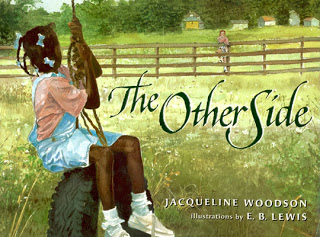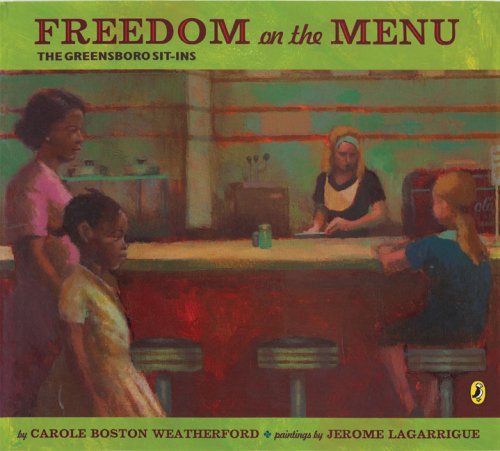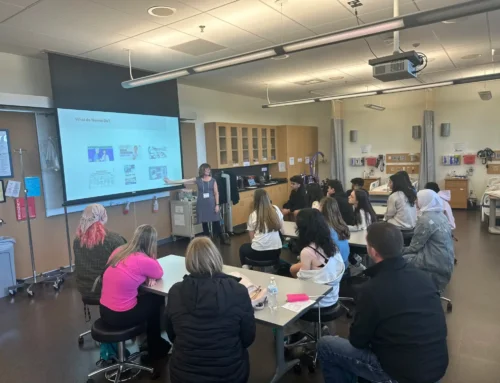Recently, I was a guest teacher in a middle school classroom that was learning about the Civil Rights era. Imagine the students’ reactions when, instead of having them open their textbook or handing them an article to silently read, I pulled out… a picture book! “Isn’t that a book for LITTLE kids?” one of the students asked with a look of disdain clearly evident on her face.
There is a common assumption that picture books belong in the early elementary grades and disappear as students move into the middle grades and beyond. However, many picture books target older students and require high-level thinking and critical viewing skills to comprehend the complexity of the text, subject matter, and illustrations.
For my middle school lesson, I read aloud the picture book, The Other Side, by Jacqueline Woodson. The author weaves a seemingly simple story about friendship into the larger tapestry of the historical time period, addressing segregation and challenges the main character, Clover, faces in trying to make friends with Annie, who lives on the other side of the fence. Through the course of the story, the girls overcome obstacles and become friends, with the author addressing the prejudices of the era through the emotions and dialogue of the characters.
By the time I read aloud the last sentence in the book, "Someday, somebody's going to come along and knock this old fence down," my adolescent audience was sitting up straight and immediately began sharing their thoughts: “The fence is a metaphor!” “Dr. King and others came along and ‘knocked down the fence’ of racial segregation a few years later.” “Why does Clover’s mom smile and let her go to the other side of the fence?”
A well-chosen picture book such as The Other Side grabs student attention and can be an excellent resource to promote active engagement, questioning, and peer discussion. The classroom teacher shared that the discussion that occurred after this read aloud was of higher quality with more students actively contributing than usual. Additionally, she revisited the story the next day and was able to address important reading standards including point of view/perspective, word choice, and theme.
In fact, her students immediately begged her to read aloud another picture book. She chose Freedom on the Menu: The Greensboro Sit-Ins by Carole Boston Weatherford. She reported that she integrated a highly effective note-taking lesson into this read aloud. Students continued to show excellent engagement and comprehension of the historical time period as well as focusing in on choices the author made to craft this text.
If you are interested in learning more about the many opportunities picture books offer to support the teaching of reading, writing, speaking, and listening, check out one of my favorite websites: Teach With Picture Books.



